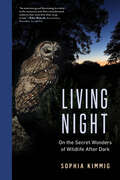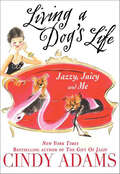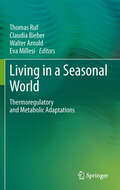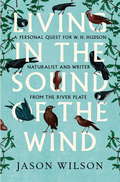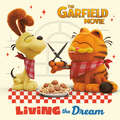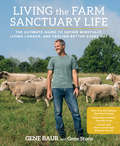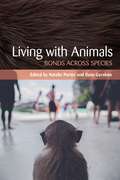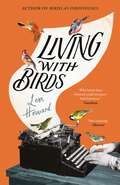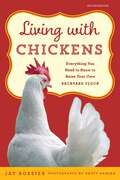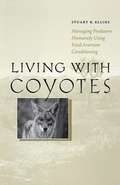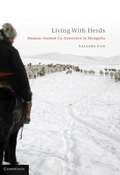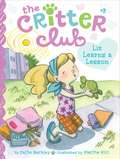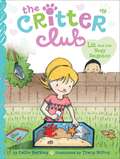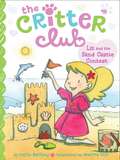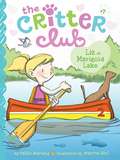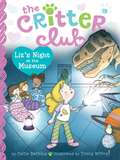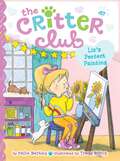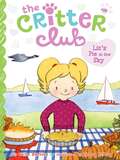- Table View
- List View
Living Night: On the Secret Wonders of Wildlife After Dark
by Sophia KimmigNatural darkness isn’t merely a time of day. For countless extraordinary species, it’s home. “An entertaining and illuminating love letter to the mysterious and often misunderstood creatures that come alive when we go to bed—and a call to preserve our precious, shared world.”—Robin Bicknell, award-winning documentary filmmaker, Ice and Fire and Nature’s Cleanup Crew When the sun sets, things start to get interesting among wild animals. Wherever we live, whether in the city or suburbs or country, darkness conjures a hidden world of wildlife that most of us rarely glimpse. Foxes, wolves, and bears prowl while skunks, opossums, and porcupines lurk; fireflies send flashing signals to potential mates; raccoons rummage for food; owls and bats fly overhead. Wildlife biologist Sophia Kimmig is our guide to the startling behaviors of these and many more nocturnal creatures. Introducing us to night’s wild inhabitants, she reveals what life for them is like in this parallel world—how it looks, feels, and smells—and the ingenious ways some creatures thrive after sunset. Living Nighthelps us appreciate how essential darkness is: not just a time but a diverse habitat all to itself—one that we still know too little about, and that we must urgently protect for the benefit of the world’s flora and fauna that depend on the day–night cycle.
Living Your Best Life According to Nala Cat
by Nala Cat Varisiri MethachittiphanInstagram's most popular feline, Nala Cat, is here to make people smile with her charming guide on how to live your best life.Are you ready to live your best life? Nala Cat, Guinness World Record holder, can teach you how.Nala uses her charm, feistiness, and cute face to spread happiness and love to millions. As an adopted cat, she also uses her social media influence to advocate for shelter animals. Nala's happy, can-do attitude makes her the perfect cat to show us how to love, dream, and be successful in life.Get ready to live your best life with Nala Cat's literary debut, featuring never-before-seen photos and a special Nala-approved guide on the best practices to adopt and take care of a pet.For more warm fuzzies follow @nala_cat
Living a Dog's Life: Jazzy, Juicy and Me
by Cindy AdamsThe swell of dog love that met Cindy Adams everywhere she went after the publication of The Gift of Jazzy made it clear that Jazzy's fans were primed for the next installment. And since, in Cindy's own words, "Yorkies are like peanuts. You can't stop at just one," her decision to bring Juicy into the family gave her ample ammo to do just that. But it wasn't long until her beloved Jazzy—who had become her closest family member and helped her cope with her husband's death—passed away unexpectedly. Cindy was devastated. Jazzy's paw prints had been indelibly imprinted on her heart and nothing and nobody would ever replace him. Cindy was certain she would never love again. But as her relationship with Juicy grew, and the loving, single-minded pooch claimed her rightful place in the center of Cindy's lap, she realized that yet again a wise four-legged companion had shown her that "Life is good. Life goes on." With her signature wit, smarts, and taste for celebrity dish, Cindy Adams shares the life lessons she learned from both her saviors—Juicy and Jazzy.
Living in a Seasonal World
by Walter Arnold Claudia Bieber Eva Millesi Thomas RufThis book summarises the newest information on seasonal adaptation in animals. Topics include animal hibernation, daily torpor, thermoregulation, heat production, metabolic depression, biochemical adaptations, neurophysiology and energy balance. The contributors to this book present interdisciplinary research at multiple levels ranging from the molecular to the ecophysiological, as well as evolutionary approaches. The chapters of this book provide original data not published elsewhere, which makes it the most up-to-date, comprehensive source of information on these fields. The book's subchapters correspond to presentations given at the 14th International Hibernation Symposium in August 2012 in Austria. This is a very successful series of symposia (held every four years since 1959) that attracts leading researchers in the field. Like the past symposia, this meeting - and consequently the book - is aimed not only at hibernation but at covering the full range of animal adaptations to seasonal environments. For the next four years, this book will serve as the cutting-edge reference work for graduate students and scientists active in this field of physiology and ecology. .
Living in a Tree: Independent Reading Non-Fiction Pink 1a (Reading Champion #515)
by Jackie WalterThis book is part of Reading Champion, a series carefully linked to book bands to encourage independent reading skills, developed with UCL Institute of Education (IOE)Living in a Tree is a non-fiction text exploring the different animals that live in trees. The repeated sentence structure offers readers the opportunity for a very first independent reading experience with the support of the illustrations.Reading Champion offers independent reading books for children to practise and reinforce their developing reading skills.This early non-fiction text is accompanied by engaging artwork and a reading activity. Each book has been carefully graded so that it can be matched to a child's reading ability, encouraging reading for pleasure.
Living in the Sound of the Wind: A Personal Quest for W.H. Hudson, Naturalist and Writer from the River Plate
by Jason WilsonW. H. Hudson was brought up on the pampas, where he learnt from gauchos about frontier life. After moving to London in 1874, Hudson lived in extreme poverty. Like his friend Joseph Conrad, Hudson was an exile, adapting to England. He never returned to Argentina. Wilson unravels Hudson's English dream, his natural history rambles, and his work to protect birds. He remains both a complex witness to his homeland before mass immigration and to his England of the mind, before the urban sprawl.
Living in the Sound of the Wind: A Personal Quest for W.H. Hudson, Naturalist and Writer from the River Plate
by Jason WilsonW. H. Hudson was brought up on the pampas, where he learnt from gauchos about frontier life. After moving to London in 1874, Hudson lived in extreme poverty. Like his friend Joseph Conrad, Hudson was an exile, adapting to England. He never returned to Argentina.Wilson unravels Hudson’s English dream, his natural history rambles, and his work to protect birds. He remains both a complex witness to his homeland before mass immigration and to his England of the mind, before the urban sprawl.Praise for Jason Wilson: Tireless, shrewd, erudite Jason Wilson, mixing hard fact and anthology, provides the perfect outfit of allusion and comparative experience - Jonathan Keates, ObserverPut his treasure trove into your pocket. - Anthony Sattin, Sunday TimesThe idea is so simple that it must be original. This inaugural book might prove to be a landmark. - Nicholas Shakespeare, Daily Telegraph
Living on the Edge (Fountas & Pinnell Classroom, Guided Reading Grade 4)
by Catherine FriendNIMAC-sourced textbook
Living on the Edge: Amazing Relationships in the Natural World
by Jeff Corwin"Get rid of it, for gosh sakes! Get rid of it!" my aunt barked when she spied the garter snake latched onto my six-year-old arm. I then responded with, "No!" That's when everyone went silent until my aunt spoke out once again, "What do you mean 'no'? Why not?" As the tears continued to stream down my face, I answered back through an exaggerated and convulsing huff, "Because I love it!" It was then that Jeff Corwin was hooked. Whether it's serpents, lizards, crocs, or frogs, or any number of furry creatures, Jeff has spent decades learning--and educating--about the world's most diverse ecosystems and their inhabitants. Travel with him now through Arizona, Africa, Costa Rica, and Venezuela to encounter those who are familiar--coyotes, elephants, anteaters, and crocodiles--and meet those who aren't: the vinegaroon, which keeps out of harm's way by gagging and repelling potential predators with caustic fumes; painted dogs, which allow only one monogamous pair within the clan to breed; the omnivorous kinkajou, which helps propagate the enormous strangler fig tree; and capybaras, the world's largest rodents, who happen to be excellent swimmers. Bear witness to the codependency of all these creatures on either the plants that surround them or each other, and look behind the scenes to see Jeff's coming of age in the world of biodiversity. Some of the fabulous creatures in these pages are in danger of becoming extinct, while all carry a vital role in maintaining these ecosystems. Without the interplay of predator, prey, and symbiotic communalism, the world as we know it would be a vastly different place.
Living the Dream (Pictureback(R))
by Random HouseThis storybook retells the story of Garfield—arriving in theaters May 24, 2024!Garfield comes to the big screen in an all-new animated film that features Chris Pratt as the voice of everyone&’s favorite lasagna-loving cat. This full-color storybook is sure to thrill children ages 3 to 7.
Living the Farm Sanctuary Life: The Ultimate Guide to Eating Mindfully, Living Longer, and Feeling Better Every Day
by Gene Stone Gene Baur<p>Winner of a Books for a Better Life Award!Gene Baur, the cofounder and president of Farm Sanctuary, the nation's leading farm animal protection organization, knows that the key to happiness lies in aligning your beliefs with your actions. <p>In this definitive vegan and animal-friendly lifestyle guide, he and Gene Stone, author of Forks Over Knives, explore the deeply transformative experience of visiting the sanctuary and its profound effects on people's lives. <p>The book covers the basic tenets of Farm Sanctuary life—such as eating in harmony with your values, connecting with nature wherever you are, and reducing stress—and offers readers simple ways to incorporate these principles into their lives. <p>Living the Farm Sanctuary Life also teaches readers how to cook and eat the Farm Sanctuary way, with 100 extraordinarily delicious recipes selected by some of the organization's greatest fans—chefs and celebrities such as Chef AJ, Chloe Coscarelli, Emily Deschanel, and Moby. <p>Coupled with heartwarming stories of the animals that Farm Sanctuary has saved over the years, as well as advice and ideas from some of the organization's biggest supporters, Living the Farm Sanctuary Life is an inspiring, practical book for readers looking to improve their whole lives and the lives of those around them—both two- and four-legged.
Living with Animals: Bonds across Species
Living with Animals is a collection of imagined animal guides—a playful and accessible look at different human-animal relationships around the world. Anthropologists and their co-authors have written accounts of how humans and animals interact in labs, in farms, in zoos, and in African forests, among other places. Modeled after the classic A World of Babies, an edited collection of imagined Dr. Spock manuals from around the world—With Animals focuses on human-animal relationships in their myriad forms.This is ethnographic fiction for those curious about how animals are used for a variety of different tasks around the world. To be sure, animal guides are not a universal genre, so Living with Animals offers an imaginative solution, doing justice to the ways details about animals are conveyed in culturally specific ways by adopting a range of voices and perspectives. How we capitalize on animals, how we live with them, and how humans attempt to control the untamable nature around them are all considered by the authors of this wild read.If you have ever experienced a moment of "what if" curiosity—what is it like to be a gorilla in a zoo, to work in a pig factory farm, to breed cows and horses, this book is for you. A light-handed and light-hearted approach to a fascinating and nuanced subject, Living with Animals suggests many ways in which we can and do coexist with our non-human partners on Earth.
Living with Birds: The true story of one woman’s extraordinary relationship with wild birds
by Len HowardLen Howard forged extraordinary relationships with the birds in her Sussex garden during the 1950s. This groundbreaking work in bird studies is also a captivating and immersive piece of nature writing.This bird biography tells the story of one exceptional Great Tit called Star. In opening her home to wild birds, Len Howard gained their trust and made astonishing discoveries about their capabilities. Star’s character and intelligence is revealed, and with patience, consistency and sensitivity Howard even succeeds in teaching Star to count using taps of her beak.Full of joy and wonder, as well as deep knowledge and fascinating detail, Living with Birds encompasses bird studies of all kinds including the fate of a lame fledgling, the bond between Great Tit parents and their babies and observations of migrant birds. It is also the story of how Howard succeeded in developing such an unusual relationship with the wild birds in her garden.'Howard seems to have stood on the brink of communication with a wild bird, something till now hardly conceivable...awe-inspiring' Observer
Living with Chickens: Everything You Need To Know To Raise Your Own Backyard Flock (Living with)
by Jay RossierA revised and updated bestseller Revised in coordination with the American Poultry AssociationCovers all the essentials of raising and keeping chickens.More than 75 color photographs and illustrations.People across the country are raising chickens, whether for food or companionship. You can, too, with this indispensable guide. Straightforward advice and dozens of clear, detailed illustrations gives any future chicken farmer the tools he needs to get started, from step-by-step instructions on building the coop to a brief background on chicken biology; from hints on getting high-quality eggs from the hens, to methods for butchering. Full-color photographs of the birds and their landscape round out this comprehensive book. This bestselling book has been completely revised and updated. Jay Rossier was coauthor of A New Lease on Farmland, published by the E. F. Schumacher Society, and wrote occasional book reviews for Northern Woodlands magazine.
Living with Coyotes: Managing Predators Humanely Using Food Aversion Conditioning
by Stuart R. EllinsThe coyote may well be North America's most adaptable large predator. While humans have depleted or eliminated most other native predators, the coyote has defied all attempts to exterminate it, simultaneously expanding its range from coast to coast and from wilderness to urban areas. As a result, coyotes are becoming the focus of increasing controversy and emotion for people across the continent— from livestock growers who would like to eradicate coyotes to conservationists who would protect them at any cost.
Living with Goats: Everything You Need to Know to Raise Your Own Backyard Herd (Living with)
by Margaret HathawayIn the newest addition to the successful “Living With” series, Hathaway and Schatz let readers in on everything they need to know about how to raise one – or twenty – goats in their own backyards. Readers will discover how to raise goats either for milk, meat, or companionship, and how to shelter and care for their pets depending on the breed (whether they’re eventually going to eat them or invite them into their family circle). Between the friendly advice, first-hand wisdom, and hilarious stories, Living With Goats reassures readers that raising goats is a rewarding and sustainable endeavor well worth their while.
Living with Herds
by Natasha FijnDomestic animals have lived with humans for thousands of years and remain essential to the everyday lives of people throughout the world. In this book, Natasha Fijn examines the process of animal domestication in a study that blends biological and social anthropology, ethology, and ethnography. She examines the social behavior of humans and animals in a contemporary Mongolian herding society. After living with Mongolian herding families, Dr. Fijn has observed through firsthand experience both sides of the human-animal relationship. Examining their reciprocal social behavior and communication with one another, she demonstrates how herd animals influence Mongolian herders' lives and how the animals themselves are active partners in the domestication process.
Liz Learns a Lesson: Amy And The Missing Puppy; All About Ellie; Liz Learns A Lesson (The Critter Club #3)
by Marsha Riti Callie BarkleyLiz is excited for a fun summer with The Critter Club, but will summer school ruin her plans?It's almost time for summer vacation, and Liz is looking forward to sleeping in, taking an art class, and spending plenty of time with her friends at The Critter Club! Between fun summer plans and busy petsitting schedules, the girls are going to have their hands full. But on the last day of school, Liz gets the unexpected news that her math grades aren't where they need to be. Though she's not thrilled to be stuck in summer school, Liz works hard--and learns a lesson even more important than fractions. With easy-to-read language and illustrations on almost every page, The Critter Club chapter books are perfect for beginning readers.
Liz Sorts It Out ( The Magic School Bus)
by Tracey WestArnold was ready for his big weekend. It was his turn to take care of Liz. It was also the weekend of the big Collection Convention
Liz and the Nosy Neighbor (The Critter Club #19)
by Callie Barkley Tracy BishopLiz has a big class project to complete but how can she focus on it when her nosy new neighbor seems to be popping up everywhere? Liz must solve both problems in the nineteenth book of the Critter Club series.When a boy Liz’s age moves in next door, Liz hopes they might become friends. But right away Liz can tell the boy has no interest in being friendly. So why does he keep showing up everywhere she is? Plus, Liz has a big class project to complete—an animal habitat diorama—but she can’t think of anything to create and her nosy new neighbor isn’t helping! With easy-to-read language and illustrations on almost every page, The Critter Club chapter books are perfect for beginning readers!
Liz and the Sand Castle Contest (The Critter Club #11)
by Marsha Riti Callie BarkleyLiz deals with some unfriendly competition at the beach and tries to rescue a baby octopus in the eleventh book of The Critter Club series.Liz and her family are at the beach! Liz loves building sand sculptures, so when she sees a flyer for a sand castle competition, of course she enters. She thinks she's found a new friend when she meets her neighbor Tommy, who is also competing, but Tommy's not so nice. He teases Liz about the castle she's building and he laughs when one of the pieces caves in. Then Liz's castle gets ruined overnight! It's the day of the contest judging, and Liz no longer has anything to enter. Did Tommy destroy Liz's sand castle? Plus, Liz finds a baby octopus that needs help! Will she be able to get the octopus back in the ocean and swimming again?With easy-to-read language and illustrations on almost every page, The Critter Club chapter books are perfect for beginning readers!
Liz at Marigold Lake: Amy Meets Her Stepsister; Ellie's Lovely Idea; Liz At Marigold Lake; Marion Strikes A Pose (The Critter Club #7)
by Callie BarkleyThe Critter Club is going camping—but are they really ready for a weekend in the wilderness?When Liz invites the Critter Club girls to her house at Marigold Lake for the weekend, they are really excited for their camping adventure—especially because Marigold Lake is known for having lots of wildlife! While the girls are there, they plan to do stuff like swim and canoe in the lake, go on a nature walk, and camp out. But with every activity, something seems to go horribly wrong. Amy accidentally tips over the canoe when the girls are out on the lake; Ellie gets spooked by what she thinks is a snake on their walk; and Marion is not pleased about sleeping outside in a tent. Liz thinks her friends aren’t having fun, and she starts to feel awful. Will the great weekend she planned turn out to be a disaster? With easy-to-read language and illustrations on almost every page, The Critter Club chapter books are perfect for beginning readers.
Liz's Night at the Museum (The Critter Club #15)
by Callie Barkley Tracy BishopIn the fifteenth book of The Critter Club series, Liz is excited for her sleepover at the museum...until she hears some spooky noises!Liz can't wait for her sleepover at the Santa Vista Art & History Museum! After all, it's been her dream to stay overnight at a museum. But when the lights go out, Liz starts to hear noises: a flutter here, a rustle there. Where are the noises coming from, and what is making them? Will this museum sleepover actually turn into a nightmare? With easy-to-read language and illustrations on almost every page, The Critter Club chapter books are perfect for beginning readers!
Liz's Perfect Painting (The Critter Club #27)
by Callie BarkleyIn the twenty-seventh book of the Critter Club series, Liz tries to create the perfect painting for an upcoming art show, but the ferret she&’s pet-sitting has other plans!Liz is having an exciting week! The Critter Club is pet-sitting a ferret, and a local artist is looking for artwork from young painters to include in a show. Liz has her heart set on creating the most perfect painting ever. She just needs to make art while pet-sitting. What could go wrong? With easy-to-read language and illustrations on almost every page, The Critter Club chapter books are perfect for beginning readers.
Liz's Pie in the Sky (The Critter Club #23)
by Callie BarkleyIn this twenty-third book of the Critter Club series, Liz and her friends spend a festive fall weekend at Marigold Lake. They bake pies, go on nature walks, and help a goose keep up with his flock!Liz and her friends are at Marigold Lake for a festive fall weekend. Liz has lots of ideas for the weekend: they&’ll go fruit picking, bake pies, and admire the nature around them. While out and about, the girls discover an injured goose who is hungry and separated from his flock. Will they be able to get their goose friend, Pie, back in shape so he can fly south with the others? With easy-to-read language and illustrations on almost every page, The Critter Club chapter books are perfect for beginning readers.
